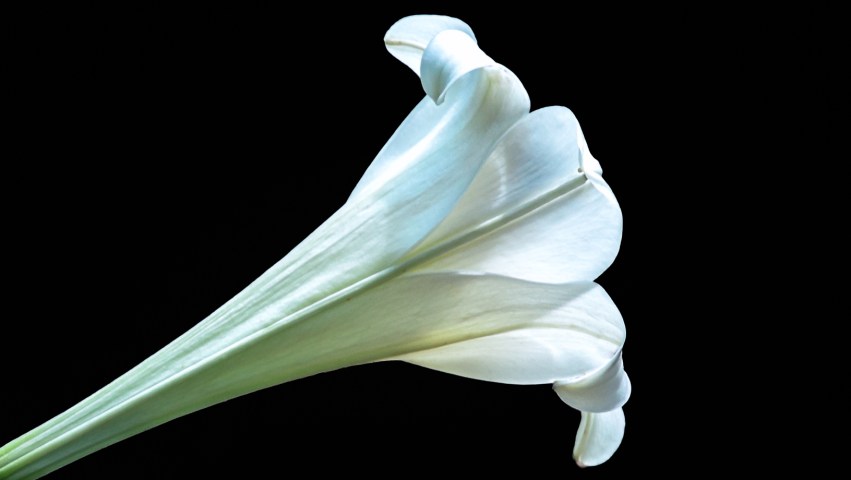From “The Lily Family and its Relatives” in The World of Plant Life by Clarence J. Hylander:
“The true Lilies… include some hundred north temperate species of large and beautifully flowered plants, of which the United States has a generous share. Few plants are so delicately and strikingly colored….
“The numerous western species of Lilium include the Washington Lily, Lemon Lily, Tiger Lily, Redwood Lily, Oregon Lily and the Little Leopard Lily. The Washington Lily, found in the pine forests of California and Oregon, has pure white, large, fragrant blossoms similar to those of the Easter Lily….
“Many of the native species are cultivated for their showy flowers, but in addition there have been introduced many familiar varieties. The common Easter Lily, grown to such an extent in Bermuda, is a native of China and Japan; its waxy-white blooms hardly need description. The Madonna Lily, a white-flowered species from southern Europe and Asia, is thought to be the lily so frequently referred to in the Bible; its flowers are smaller than those of the Easter Lily….”
From “Lily” in Flowers in History by Peter Coats:
“L. longiflorum comes originally from the Ryukyu Islands, and until the entire lily crop was wiped out by disease, was much grown in Bermuda. In the author’s youth, Easter or Bermudan lilies, as they were then called, were used by the thousand for party decoration, and in the ‘thirties, white lilies, with blue Echinops Ritro, the Globe thistle, arranged in square glass accumulator jars, were as popular as floral decoration as hosta leaves and Alchemilla mollis are today. L. longiflorum, as classic a lily as the Madonna, with its perfectly proportioned flowers with delicious scent, is still an appropriate flower for any occasion.”
Hello!
This is the second of two posts featuring summer-blooming Easter Lilies (Lilium longiflorum) from Oakland Cemetery’s gardens. The first post is Long-Legged Lilies (1 of 2). As with the previous post, I found these lilies growing in odd places throughout the gardens, mostly on single stems, except for those toward the center below — where their very tall stems sported a cluster of three blossoms rivaling the height of tree branches nearby.
Thanks for taking a look!














































































